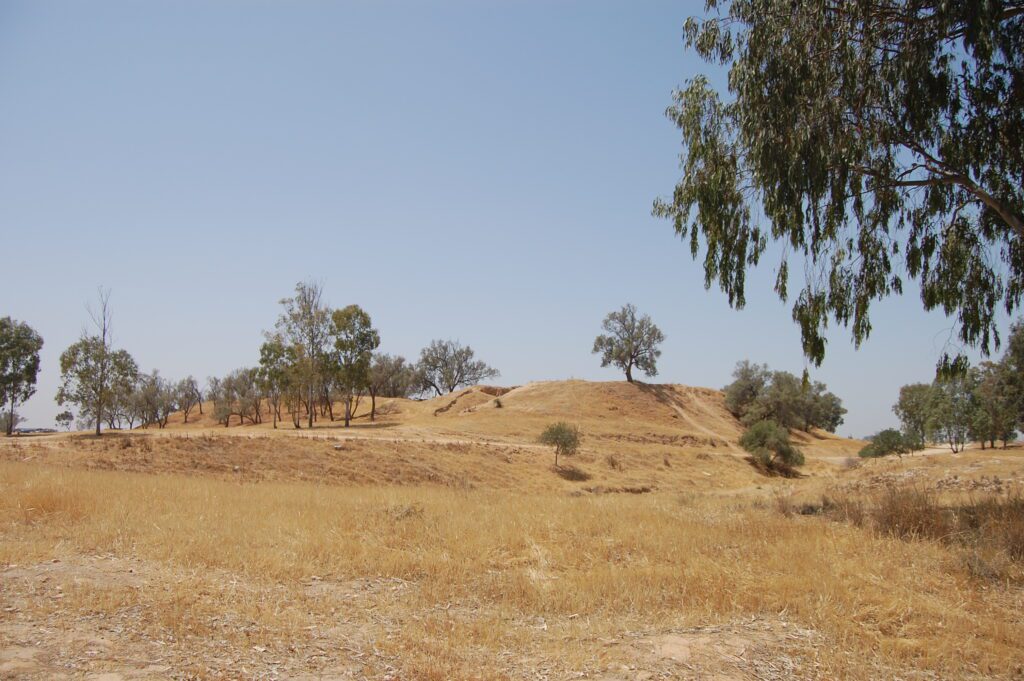Location
Tel Haror, also known as Tell Abu Hureireh, is located in the western Negev desert, on the northern bank of Nahal Gerar, approximately 20 km west of Beersheba and 7 km from Tel Sera’, on the main road from Gaza to the Beersheba Valley.

Identification
Early identifications of Tel Haror with cities in the territory of Simeon, such as Beth-Merkaboth, were based on the assumption that the site was not inhabited until the Iron Age. However, continuous habitation was confirmed from the Bronze and Iron Ages, leading to its identification with Canaanite and Philistine Gerar, the city associated with Abimelech in the Bible.
Historical Context
Tel Haror was continuously inhabited during the Bronze and Iron Ages. The site consists of two superimposed mounds, with the upper tell rising 10 to 15 m above the surrounding terrain.
In the Bible
The site is potentially identified with the biblical city of Gerar, associated with Abimelech, a figure in the narratives of Genesis and Chronicles.
Excavations
Excavations at Tel Haror were conducted between 1982 and 1990, revealing that the site had been occupied since the Chalcolithic period. The main periods of occupation discerned are from the Iron III-Persian period (8th-4th century BCE) to the Iron I period (12th-11th century BCE).
Findings Focused on Iron Age
Iron Age I (12th-11th century BCE)
- Settlements were found in areas B, D, K, and L.
- Evidence of Philistine culture with richly decorated Philistine pottery, both monochrome and bichrome.
- Stone seals depicting a lion and a horned animal were discovered.
- A massive mud-brick wall, possibly part of a citadel, was found guarding the settlement.
Iron Age II (10th-9th century BCE)
- The transition from Iron Age I to Iron Age II is marked by the presence of Cypro-Phoenician wares, hand-burnished vessels, and characteristic storage jars.
- The ceramic repertoire helps date the end of Iron Age I or the beginning of Iron II to around 1000 BCE.
Iron Age III (8th-6th century BCE)
- Highly organized town or fortified citadel with an elaborate defense system and public architecture.
- A defense wall, rampart, glacis, watchtowers, and possibly a corner fort were discovered.
- The defense wall was coated with a thick layer of plaster and preserved to a height of about 4 m.
- Evidence of destruction by fire towards the end of the Iron Age was found.
Late Iron Age
- The integration of ashlar masonry in mud-brick walls, a technique noted in neighboring Tel Sera’, suggests a connection between the sites.
- The defense wall foundations were reinforced by a glacis-like structure, indicating sophisticated construction techniques.
The findings from Tel Haror during the Iron Age provide significant insights into the Philistine expansion and their cultural influence in the western Negev during the 12th to 11th centuries BCE. The site’s evolution from a Philistine to an Israelite settlement is marked by continuous development and sophisticated urban planning.


